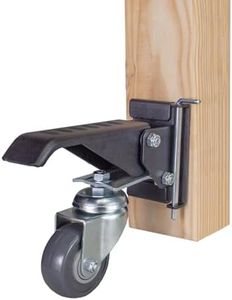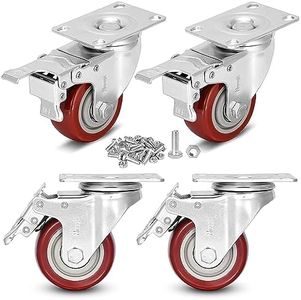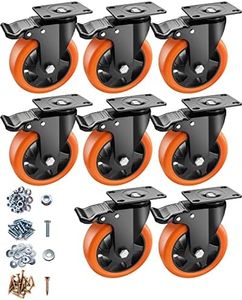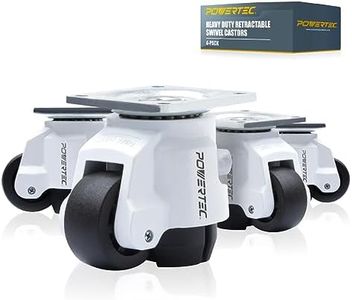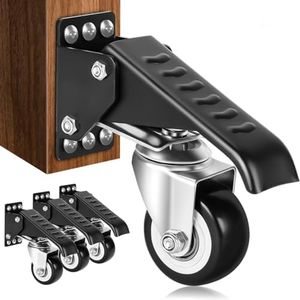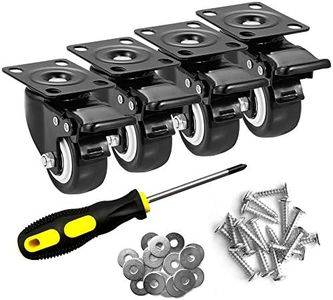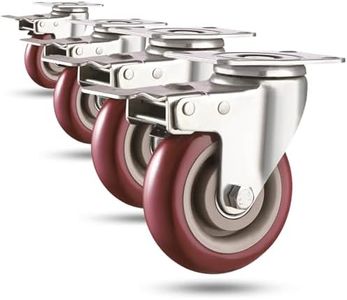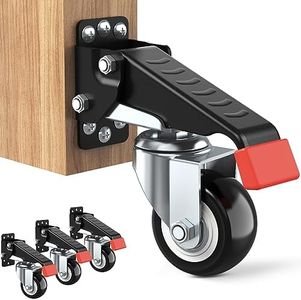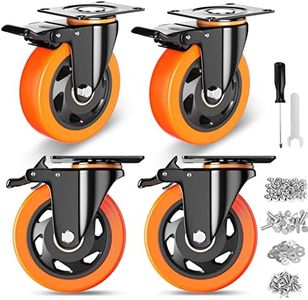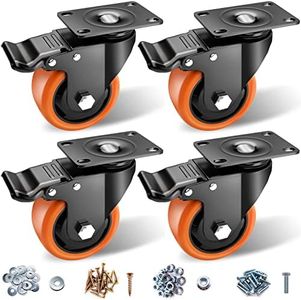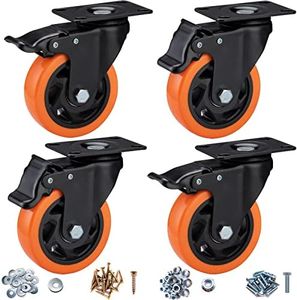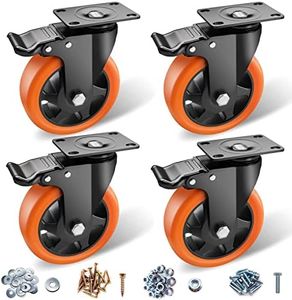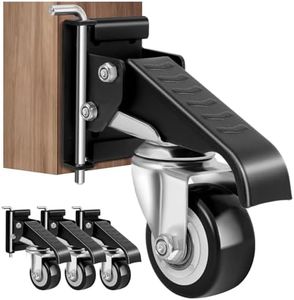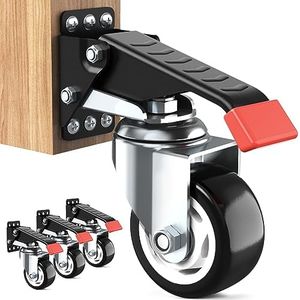We Use CookiesWe use cookies to enhance the security, performance,
functionality and for analytical and promotional activities. By continuing to browse this site you
are agreeing to our privacy policy
10 Best Casters For Workbench
From leading brands and best sellers available on the web.Buying Guide for the Best Casters For Workbench
Choosing the right casters for your workbench can make a big difference in how easily you can move and work with your bench. The key is to think about your environment (like floor type and space), how much weight your workbench needs to support, and what type of movement or stability you want. By considering a few important specifications, you can find casters that make your workbench much more practical for your workspace.Load CapacityLoad capacity refers to the maximum weight each caster can safely hold. This is important because exceeding this weight can cause the casters to fail, which could damage your workbench or cause accidents. When you look at load capacity, divide the total weight of your workbench (including what you'll store or work on) by the number of casters you plan to use. Casters are often grouped into light duty (under 100 pounds per caster), medium duty (100-300 pounds per caster), and heavy duty (over 300 pounds per caster). If your workbench is for heavy tools or machinery, heavier-duty casters are best. For lighter hobby benches, light or medium casters work well.
Wheel MaterialThe wheel material determines how easily and smoothly your workbench rolls, and how much damage it may cause to your floor. Common materials include rubber, polyurethane, metal, and plastic. Soft wheels like rubber and polyurethane are gentle on floors and good for indoor use, while hard wheels like metal or hard plastic roll well on rough surfaces but can scratch delicate floors. If you have concrete flooring, metal might be fine; for wood, tile, or finished floors, soft wheels are safer. Think about where you'll be moving the bench most.
Wheel SizeWheel size affects both movement and clearance. Larger wheels (like 4 inches or more) roll over bumps and debris easier and provide better mobility, while smaller wheels are lower in profile and work well for smooth floors. If your workspace often has cords or uneven surfaces, go for bigger wheels. If space and height are limited, smaller wheels keep things lower to the ground.
Swivel vs. RigidThis refers to whether the wheels can turn (swivel) or only roll straight (rigid). Swivel casters allow for easy maneuvering and turning but may make it harder to keep the bench in a straight line. Rigid casters only go forward and backward, providing stability but less flexibility in movement. Often, people use two swivel and two rigid casters for a balance between mobility and control. If your space is tight and you need to turn often, more swivels help; if you want the bench to stay put when moving, include some rigids.
Brakes and LocksBrakes and locks are safety features that let you secure your workbench in place. This is crucial if you'll be doing detailed or heavy-duty work that requires the bench not to move. Some casters come with foot-operated locks on the wheels, which you just press down to engage. Always consider if you'll need to lock the bench in place for steady work, and if so, pick casters with reliable and easy-to-use brakes.
Mounting TypeThe mounting type describes how the caster attaches to your workbench. The most common are plate-mounted (a flat piece that bolts to the bottom) and stem-mounted (a single rod that inserts into a hole). Plate mounts spread the load better and are more stable for heavier benches, while stem mounts are quick for lighter setups. Know what your bench can accommodate before choosing.
